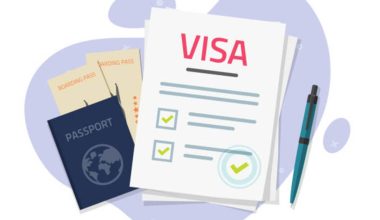When applying for a job, your application letter is your first chance to make a lasting impression. Think of it as your ticket to get your foot in the door—an opportunity to showcase your enthusiasm and suitability for the role.
But writing one can feel daunting if you don’t know where to start. Don’t worry; we’ve got you covered. This article will break down every step of crafting a compelling application letter that stands out to recruiters.
Understanding the Purpose of an Application Letter
The application letter, often called a cover letter, is a tailored document sent alongside your resume. While your resume focuses on listing your skills, experiences, and achievements, the application letter tells a story. It’s your chance to explain why you’re the perfect fit for the job.
How does it differ from a resume? A resume is factual and concise, but the application letter is personal and persuasive. It allows you to directly address the employer, connecting your qualifications to their needs. Think of it as your elevator pitch on paper.
Research Before Writing the Application Letter
Choosing the Right Format and Structure
Formatting is crucial to ensure your letter looks professional and is easy to read. Here are the basics:
- Use a formal business letter format.
- Keep margins at 1 inch and use a professional font like Times New Roman or Arial, size 11-12.
- Structure it into three main sections: introduction, body, and conclusion.
Make sure your letter flows logically. A well-organized letter is easier for hiring managers to follow and increases your chances of making an impact.
Header and Contact Information
At the top of your letter, include your name, address, email, and phone number. Below that, list the recipient’s name, title, company, and address. For example:
[Your Name]
[Your Address]
[Your Email]
[Your Phone Number][Date]
[Recipient’s Name]
[Recipient’s Title]
[Company Name]
[Company Address]
This ensures your letter is formatted correctly and looks polished.
Crafting the Perfect Salutation
Getting the salutation right sets the tone for the entire letter. Address the recipient by name whenever possible. Use “Dear [Mr./Ms. Last Name]” for a formal approach.
If you don’t know the name of the recipient, avoid generic greetings like “To Whom It May Concern.” Instead, opt for “Dear Hiring Manager” or “Dear [Job Title] Team.” A little effort to personalize the salutation can go a long way.
Writing an Engaging Introduction
Your introduction is your hook—it should grab the reader’s attention right away. Start by stating the position you’re applying for and where you found the job listing. For example:
“I am writing to express my interest in the Marketing Specialist position advertised on your company website. With a strong background in digital marketing and a passion for creative problem-solving, I am excited about the opportunity to contribute to your team.”
Make it clear why you’re excited about the role and why you’re a great fit.
Highlighting Your Skills and Experience in the Body
In the body of your letter, connect your qualifications to the job requirements. Use specific examples to demonstrate how your skills and experience align with the role.
For example:
“In my previous role as a Social Media Manager, I increased engagement rates by 35% through targeted campaigns and innovative content strategies. My ability to analyze metrics and adapt quickly to trends makes me confident I can deliver similar results for your team.”
Avoid vague statements. Focus on achievements and contributions that showcase your value.
Conveying Enthusiasm and Fit for the Role
Employers want to hire people who are excited about the job and their company. Show that you’ve done your homework by mentioning specific aspects of the company that appeal to you.
For instance:
“I admire your company’s commitment to sustainability and innovation. Joining your team would allow me to combine my professional skills with my personal passion for environmental responsibility.”
Making a Strong Closing Paragraph
The closing paragraph of your application letter is your final opportunity to leave a strong impression. Use this space to:
- Reiterate your enthusiasm for the role.
- Summarize why you’re the ideal candidate.
- Politely invite the employer to take action, such as scheduling an interview.
Here’s an example:
“I am eager to bring my skills and experience to [Company Name] and contribute to the success of your [specific project or goal, if known]. I would welcome the opportunity to discuss how my background aligns with your needs. Thank you for considering my application. I am available at your earliest convenience for an interview and can be reached at [your phone number] or [your email address].”
Keep it professional, concise, and optimistic.
Proper Sign-Off for an Application Letter
Your sign-off is the finishing touch that leaves a lasting impression. Use a professional closing phrase such as:
- Sincerely,
- Best regards,
- Respectfully,
Below your sign-off, include your full name and, if applicable, a digital signature. For instance:
Proofreading and Editing
One of the most common mistakes applicants make is submitting an application letter filled with errors. A well-written letter is not just about the content—it’s about presentation.
- Double-check grammar and spelling: Even minor errors can create a negative impression.
- Ensure clarity and conciseness: Avoid long-winded sentences that dilute your message.
- Read aloud: This can help you catch awkward phrasing or unclear points.
If possible, ask a friend or mentor to review your letter for additional feedback.
Tips for Customizing Your Letter
Every job application is unique, so your application letter should reflect that. Generic letters won’t impress recruiters. Here’s how to customize effectively:
- Use keywords from the job description: This shows you understand the role and have relevant skills.
- Highlight specific achievements: Mention accomplishments that are most relevant to the job you’re applying for.
- Adjust your tone: Reflect the company’s culture—formal for traditional industries, and slightly more casual for startups.
Remember, customization doesn’t mean rewriting from scratch every time. Create a strong template, then tweak it to suit each application.
Examples of Strong Application Letters
Sometimes, seeing a good example is the best way to learn. Here’s a brief sample application letter:
Sample Application Letter 1
[Your Name]
[Your Address]
[Your Email]
[Your Phone Number]
[Date][Recipient’s Name]
[Recipient’s Title]
[Company Name]
[Company Address]Dear [Recipient’s Name],
I am excited to apply for the [Job Title] position at [Company Name], as advertised on [Job Board/Company Website]. With over five years of experience in [relevant field], I bring a proven track record of success in [specific skill or achievement].
In my current role as [Your Job Title] at [Current Company], I have honed skills in [specific skill or responsibility], resulting in [notable achievement]. My ability to [specific trait or ability] has consistently contributed to [specific outcome]. I am particularly drawn to [Company Name]’s commitment to [specific company value or initiative], as it aligns with my personal values and professional goals.
I would welcome the opportunity to bring my skills and enthusiasm to your team and contribute to the success of [specific company goal/project]. Thank you for considering my application. I am available for an interview at your convenience and can be reached at [Your Phone Number] or [Your Email Address].
Sincerely,
[Your Name]
Sample Application Letter 2
[Your Name]
[Your Address]
[Your Email]
[Your Phone Number]
[Date][Recipient’s Name]
[Recipient’s Title]
[Company Name]
[Company Address]Dear [Recipient’s Name],
I am thrilled to apply for the Marketing Manager position at [Company Name], as advertised on [Job Portal/Company Website]. With over seven years of experience in crafting innovative marketing strategies and leading successful campaigns, I am confident that my expertise can significantly contribute to your team.
In my previous role as Senior Marketing Specialist at [Current Company], I spearheaded a digital campaign that increased customer engagement by 45% and led to a 30% boost in sales. My ability to analyze market trends and adapt strategies accordingly has allowed me to consistently meet and exceed business objectives. I am particularly drawn to [Company Name]’s emphasis on creativity and customer-first solutions, which align perfectly with my professional values.
I am eager to bring my skills in brand positioning, content strategy, and team leadership to [Company Name] and help drive your marketing efforts to new heights. I look forward to the opportunity to discuss how I can contribute to your organization’s success. Please feel free to contact me at [Your Phone Number] or [Your Email Address] to arrange a meeting.
Sincerely,
[Your Name]
Sample Application Letter 3
[Your Name]
[Your Address]
[Your Email]
[Your Phone Number]
[Date][Recipient’s Name]
[Recipient’s Title]
[School Name]
[School Address]Dear [Recipient’s Name],
I am writing to express my enthusiasm for the position of English Teacher at [School Name], as advertised on [Platform]. With a Master’s degree in English Literature and over five years of teaching experience, I have cultivated a passion for fostering student growth through innovative and engaging learning techniques.
In my current role at [Current School], I designed a literature-based curriculum that increased student participation by 20% and received positive feedback from both students and parents. My approach combines modern teaching methodologies with a commitment to developing critical thinking and communication skills in students. I am particularly impressed by [School Name]’s dedication to holistic education and fostering creativity, and I am eager to contribute to your academic community.
Thank you for considering my application. I am excited about the opportunity to bring my expertise to [School Name] and inspire students to achieve their full potential. I am available at your earliest convenience for an interview and can be reached at [Your Phone Number] or [Your Email Address].
Best regards,
[Your Name]
Conclusion
Writing an effective application letter is a skill that can open doors to countless opportunities. By following the steps outlined in this guide—researching, tailoring your content, and presenting yourself professionally—you can craft a letter that gets noticed and lands you the interview.
Remember, your application letter is your chance to showcase not just your qualifications but also your personality and enthusiasm.
FAQs
1. How long should an application letter be?
An application letter should typically be one page long, with 3–4 concise paragraphs. Avoid overwhelming the reader with too much information.
2. Can I reuse the same application letter for multiple jobs?
While you can use a basic template, always tailor your letter to the specific role and company. Customization shows genuine interest and increases your chances of success.
3. What if I don’t know the recipient’s name?
Use a professional generic salutation like “Dear Hiring Manager” or “Dear [Job Title] Team.” However, try to research the recipient’s name whenever possible.
4. Should I include my resume in the application letter?
No, your application letter should complement your resume, not duplicate it. Mention highlights, but leave detailed information for the resume.
5. How important is proofreading?
Proofreading is critical. Typos or grammatical errors can make a negative impression and harm your chances of getting an interview.





